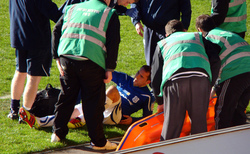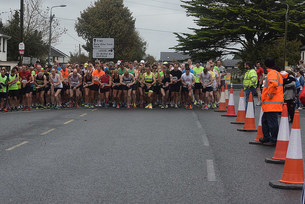- Home
- About Us
- TSPT Academy
- Online Courses
-
Resources
- Newsletter
- Business Minded Sports Physio Podcast
- Day in the Life of a Sports PT
- Residency Corner
-
Special Tests
>
-
Cervical Spine
>
- Alar Ligament Test
- Bakody's Sign
- Cervical Distraction Test
- Cervical Rotation Lateral Flexion Test
- Craniocervical Flexion Test (CCFT)
- Deep Neck Flexor Endurance Test
- Posterior-Anterior Segmental Mobility
- Segmental Mobility
- Sharp-Purser Test
- Spurling's Maneuver
- Transverse Ligament Test
- ULNT - Median
- ULNT - Radial
- ULNT - Ulnar
- Vertebral Artery Test
- Thoracic Spine >
-
Lumbar Spine/Sacroiliac Joint
>
- Active Sit-Up Test
- Alternate Gillet Test
- Crossed Straight Leg Raise Test
- Extensor Endurance Test
- FABER Test
- Fortin's Sign
- Gaenslen Test
- Gillet Test
- Gower's Sign
- Lumbar Quadrant Test
- POSH Test
- Posteroanterior Mobility
- Prone Knee Bend Test
- Prone Instability Test
- Resisted Abduction Test
- Sacral Clearing Test
- Seated Forward Flexion Test
- SIJ Compression/Distraction Test
- Slump Test
- Sphinx Test
- Spine Rotators & Multifidus Test
- Squish Test
- Standing Forward Flexion Test
- Straight Leg Raise Test
- Supine to Long Sit Test
-
Shoulder
>
- Active Compression Test
- Anterior Apprehension
- Biceps Load Test II
- Drop Arm Sign
- External Rotation Lag Sign
- Hawkins-Kennedy Impingement Sign
- Horizontal Adduction Test
- Internal Rotation Lag Sign
- Jobe Test
- Ludington's Test
- Neer Test
- Painful Arc Sign
- Pronated Load Test
- Resisted Supination External Rotation Test
- Speed's Test
- Posterior Apprehension
- Sulcus Sign
- Thoracic Outlet Tests >
- Yergason's Test
- Elbow >
- Wrist/Hand >
- Hip >
- Knee >
- Foot/Ankle >
-
Cervical Spine
>
- I want Financial Freedom
- I want Professional Growth
- I want Clinical Mastery
 For this week's post, I'd like to pose more of a question or consideration, instead of the usual content. As many of you know, I have written about cases several times in the past about examining and treating chronic "strains." In the outpatient setting, odds are you will frequently be presented with cases where the patient reports straining a muscle months/years ago and never fully recovering. In prolonged cases like these, the connective tissue typically has healed, or at least should no longer be responsible for the pain. At this point, the nervous system is typically the culprit for any remaining pain/limitation. This can be examined and treated with any of the techniques usually utilized for the neuromuscular system. While this can readily be applied in patient presenting with chronic strains, I have recently been wondering if it is applicable to those with more acute injuries as well. With pain being a perception in the manifestation of the nervous system, should we expect there to be a significant difference in the acute setting. I'm not sure. I rarely am presented with patients complaining of an acute strain. Typically, people get hurt, then rest until it is better, or at least do some form of self-management. Occasionally, I have people come in for a free screen, where I do an assessment and provide a little treatment, along with my recommendation on how to manage the injury. I have had a few people come in with strain presentations, but show some improvement with repeated motions. Unfortunately, these clients don't typically follow-up, but there is still an improvement on display. I also often wonder how this could potentially apply to someone "risk" for a strain. If someone has a lot of neural tension limiting mobility, would a repeated motion or nerve glides decrease that risk? What are your thoughts and experiences on this? -Chris Like this post? For more advanced information, join the Insider Access Page now! Also, check out similar previous posts below:
3 Comments
Robbie Horstman
5/27/2015 08:41:23 am
Hey Chris -
Reply
Mary Kimberlin
5/30/2015 02:58:32 am
Do you know anybody in Dallas trained in this?
Reply
5/30/2015 09:25:15 am
I was taking the Explain Pain course from Bob Johnson earlier this month and the patient he presented was having left sided back pain and sciatica type symptoms. Initially the pt said he had no previous issues, but when Bob dug deeper the guy had had some left cervical shoulder stuff and i believe left knee. Nothing serious but stuff that kind of came and went. Afterward Bob talked about that this pt's nervous system had been "bubbling up" for a while on the left side and presented as a left sided lumbar situation because of sustained flexion (patient driving long distances for work) rotation (1st rounds of golf for the season) and psychosocial stresses mixed in. Maybe looking at those other parts of the history deeper would help, especially if the "strain" doesn't have a typical muscle pull presentation. He theorized that many people have a sensitized nervous system that kind of gives people these minor come and go things until it was mixed with bigger physical and/or biopsychosocial issues and then something would come but no go as easily.
Reply
Leave a Reply. |
Dr. Brian Schwabe's NEW Book in partner with PaleoHacks!
Learn residency-level content on our
Insider Access pages We value quality PT education & CEU's. Click the MedBridge logo below for TSPT savings!Archives
July 2019
Categories
All
|








 RSS Feed
RSS Feed